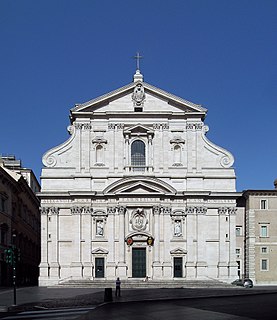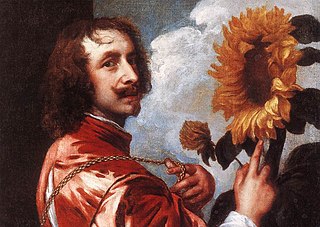
Corso Buenos Aires is a major street in north-eastern Milan, Italy. With over 350 shops and outlets, it features the highest concentration of clothing stores in Europe. The architecture of the area is mostly late 19th- and 20th-century style; the street and its surroundings are pointed with several neo-classical and art nouveau buildings.

Via Manzoni, is a busy and fashionable street in the Italian city of Milan which leads from the Piazza della Scala north-west towards Piazza Cavour. Notable buildings include the Museo Poldi Pezzoli, the elegant Grand Hotel et de Milan, which was the place of Giuseppe Verdi’s death in 1901, and several fine palazzi. Via Manzoni was originally called Corsia del Giardino before the crossroad with via montenapoleone and corso di porta nuova up until piazza Cavour.

Villas and palaces in Milan are used to indicate public and private buildings in Milan of particular artistic and architectural value. Milan has always been an important centre with regard to the construction of historical villas and palaces, ranging from the Romanesque to the neo-Gothic, from Baroque to Rococo.
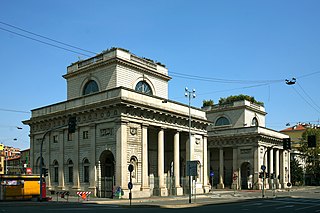
Porta Venezia is one of the historical gates of the city of Milan, Italy. In its present form, the gate dates back to the 19th century; nevertheless, its origins can be traced back to the Medieval and even the Roman walls of the city.

Porta Romana is a former city gate of Milan, Italy. In its present form, the gate dates back to the 16th century Spanish walls of Milan; its origins can be traced further back to the Roman walls of the city, which had a corresponding "Roman Gate" roughly in the same area. Porta Romana was the first and the main imperial entrance of the entire city of Milan, as it was the starting point of the road leading to Ancient Rome.
Vigentino is a district ("quartiere") of Milan, Italy, part of the Zone 5 administrative division, located south of the city centre. Before 1923, Vigentino was an autonomous, rural comune. By the mid 20th century, agricultural activities were dismissed, and the area was largely urbanized, with the construction of large apartment blocks.
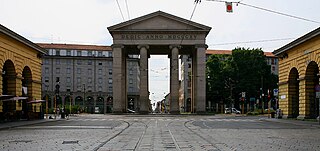
Porta Ticinese is a former city gate of Milan, Italy. The gate, facing south-west, was first created with the Spanish walls of the city, in the 16th century, but the original structure was later demolished and replaced in the early 19th century. The name "Porta Ticinese" is used both to refer to the gate proper and to the surrounding district, part of the Zone 6 administrative division. In the same district there is also a homonymous medieval gate, although in common speech the name "Porta Ticinese" is usually assumed to refer to the 19th century gate.

Porta Magenta, formerly known as Porta Vercellina, was one of the city gates of Milan, Italy. The gate was established in the 9th century, with the Roman walls of the city; it was moved with the medieval and Spanish walls, and was finally demolished in the 19th century. The phrase "Porta Magenta" is now used to refer to the district ("quartiere") where the gate used to be; the district is part of the Zone 7 administrative division of Milan, west of the city centre.
The city Milan, Italy, has had three different systems of defending walls. The oldest, Roman walls were developed in two stages, the first in the Republican and the second in the Imperial era. The second wall system was realized in the Middle Ages, after the destruction of the city by Frederick I Barbarossa. Finally, the latest wall system was built by the Spanish rulers. While very little remains of these walls, their structure is clearly reflected in the urbanistic layout of the city. In particular, modern Milan has two roughly circular rings of streets, namely the "Cerchia dei Navigli" and the "Cerchia dei Bastioni", which essentially correspond to the Medieval and Spanish walls, respectively.

The Palazzo della Ragione is a historic building of Milan, Italy, located in Piazza Mercanti, facing the Loggia degli Osii. It was built in the 13th century and originally served as a broletto as well as a judicial seat. As it was the second broletto to be built in Milan, it is also known as the Broletto Nuovo.
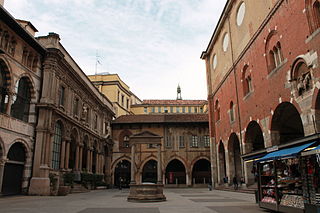
Piazza Mercanti is a central city square of Milan, Italy. It is located between Piazza del Duomo, which marks the centre of the modern city of Milan, and Piazza Cordusio, and it used to be the heart of the city in the Middle Ages. At the time, the square was larger than it is now and known as "Piazza del Broletto", after the "Broletto Nuovo", the palace that occupied the centre of the square. In the 13th century, there were six entry points to the square, each associated to a specific trade, from sword blacksmiths to hat makers.

Casa Campanini is an art nouveau building in Milan, Italy, located at 11, Via Bellini. It was completed between 1903 and 1906 by architect Alfredo Campanini, who later inhabited the building.

The Zone 1 of Milan is one of the 9 administrative zones of Milan, Italy.
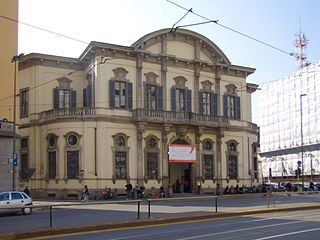
Palazzo Sormani is a historic building of Milan, Italy, and the seat of the central public library of Milan. It is located at number 6 in Corso di Porta Vittoria, in the Zone 1 administrative division of the city.

The Palazzo Brentani is a historic mansion located in the centre of Milan, Italy, at Via Manzoni number 6. Both this palace and the adjacent Palazzo Anguissola sport Neoclassical facades, designed by Luigi Canonica in 1829.

The Palazzo Anguissola or Anguissola Traversi is a palace located at Via Manzoni number 10, in central Milan, a city in the northern Italy. Construction began in 1778, and its Neoclassical facade, designed by Luigi Canonica, was added in 1829.

The Palazzo Tarsis is an 18th-century mansion in Milan, northern Italy, built in the Neoclassical style. Its interiors were fully renovated after the building was bombed in 1943. Historically part of the Porta Nuova district, it is located at 1, Via San Paolo.

The Municipality 9 of Milan is one of the 9 administrative zones of Milan, Italy. It corresponds to the northern area of the city.
The Palazzo Mellerio is a late-baroque-style palace located on Corso di Porta Romana #13 in Milan, region of Lombardy, Italy.

